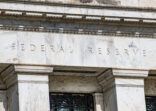“Asian bond prices have shown great resilience this year, even during the turmoil in the US high yield bond market this week,” Freddy Wong, managing director and head of Asia-Pacific fixed income at Invesco, told FSA.
Wong co-manages the $450m Invesco Asian Bond Fund, which has posted a 2.69% return since the start of the year, outperforming the average returns of Asia fixed income funds available to retail investors in Hong Kong (1.09%) and Singapore (0.2%), according to FE Fundinfo.
However, the riskier Asia-Pacific high yield sector has suffered contagion from this week’s sharp fall in the US high yield bond market, although its losses have been far less dramatic. The sector’s average return has declined 2.05% so far this year, compared with much sharper falls by the global high yield sector (-5.31%), US high yield sector (-4.94%) and the European high yield sector (-4.33%), according to FE Fundinfo.
Wong’s fund has a 51% allocation to China and 54% of its holdings have sub-investment grade credit ratings. He believes that Asia bonds across the credit spectrum have several attractions compared with corporate bond markets in other regions.
First, there is typically an “Asia risk premium” justified by historical concerns about governance and transparency, which translates into higher yields for Asia credits of around 150 basis points (bps) for BB names and 300-400 bps for single-B issues, compared to yields on equivalent US credits.
There is also a low correlation of just 0.5 between the returns of Asian and US high yield bonds, which means that Asia bonds should continue to provide some protection against any further declines in US high yield.
Second, most Asian countries (including China) are net-importers of oil, while governments across the region have been supportive through fiscal and monetary policy. Economies remain in reasonable shape, with large property companies — which make up 40% of Asia bond issuance — still earning positive margins.
Third, the regional balance of investors in Asia bonds has shifted dramatically during the past decade.
“About 90% of new issues are bought by Asia-based investors now, whereas 10-years ago a third each went to Asia, Europe and the US,” said Wong.
Widespread optimism
Other Asia-based credit strategists and bond fund managers are also sanguine about the asset class.
Paul Lukaszewski, head of corporate debt for Asia and Australia and head of emerging market credit research at Aberdeen Standard Investments, has seen increased demand from Asian clients for emerging market debt in general and Asia corporate bonds in particular.
“Though Asia was not immune from selling pressure, Asia’s high yield credit market has been outperforming US high yield in the recent selloff. Asia’s central banks have already delivered fiscal and monetary policy easing and it appears countries in the region have the virus contained. So Asia is poised to continue to outperform as it starts its recovery phase, while the rest of the world still grapples with containing the spread of Covid-19,” said Lukaszewski, who is co-manager of the Aberdeen Standard Emerging Markets Corporate Bond Fund.
“Asian credit, which is the highest quality emerging market bond category, offers an attractive premium to developed credit markets, especially when global rates trend lower,” he added.
Sheldon Chan, associate portfolio manager of T Rowe Price’s Asian credit bond strategy, likes Asia credit for its “risk-adjusted relative value”.
“So far in this sell-off, Asia credit spreads have held up better than US credit in both investment grade and high yield, and we expect the sector to remain more resilient,” he said.
He pointed out that the focus is now on the threat to Europe and North America as the Covid-19 virus spreads outside Asia, while there seems to be a gradual resumption of economic activity in China. Moreover, Asia credit has less exposure to the energy sector. For example, Asia high yield has approximately 3% weight in commodities, compared with around 10% in US high yield.
“Nevertheless, across Asian high yield markets, the sell-off prompted by the US declines has led to some curve steepening with longer duration bonds less favoured,” said Chan.
“For us, this creates opportunities in issuers that have healthy balance sheets and proven access to capital,” he said.
In addition, Chan continues to like the China high yield property sector “given the attractive yields and short duration in an environment of low global yields”.
Shaw Yann Ho, managing director and head of JP Morgan Asset Management’s Asian fixed income team, identifies three main reasons to be optimistic about Asia high yield credit:
“First, China’s policy makers have been effective in containing the spread of the Covid-19 virus and people are now gradually returning to work. Production figures for the first quarter of this year are likely to be poor, but they have the chances of recovering gradually,” she said.
“Second, the current average high yield spread of 650 basis points [over US Treasuries] is the same as it was in the first half of last year when there seemed to be no end in sight for the US-China trade dispute. When a resolution became more likely during the second half of the year, the spread quickly tightened by 100bp. A similar rally could occur if investors’ confidence returns.”
“Finally, central banks throughout the region are using monetary policy to ensure that companies have better access to liquidity,” said Ho.
Entry points
Meanwhile, Ross Dilkes, portfolio manager at UBS Asset Management, believes that the recent adjustment in credit spreads provides an increasingly attractive entry point to Asia high yield and he expects strong market performance in the second half of the year.
“Global central bank action and government stimulus will improve the growth outlook and we expect the region to outperform,” he told FSA.
He said that the asset class is not significantly exposed to oil and commodity price weakness, and default rates will remain low overall – which are currently 2.24% in Asia compared with 2.29% globally, according to S&P data.
However, Dilkes expects that both interest rates and credit spreads are likely to remain volatile in the near-term, as investors assess the impact and the potential duration of the disruptions caused by the Covid-19 outbreak to areas outside of China.
“In our Asian strategies, we have been defensively positioned over recent weeks, reducing exposure to credit, maintaining an overweight to duration, and adding short positions in Asian foreign exchange. This allows us to proactively manage a more challenging liquidity environment and also to take advantage of market dislocations,” he said.
HSBC Global Asset Management has also taken a defensive position in Asia high yield oil and gas that focuses at the short-end of the yield curve, where it particularly favours “select China names with sound fundamentals and cash raised to tender their bonds, meaning refinancing risks are very limited,” according to Geoffrey Lunt, director and senior product specialist, fixed income at the firm.
“In China, the property sector continues to offer decent yields, and while we prefer large players, we are selective in this space and expect greater credit differentiation going forward. In India, we like the utilities sector for its more defensive nature, and we are overweight the technology and consumer sectors on an individual bond selection basis,” he told FSA.
Lunt reflects the confidence expressed by other Asia bond specialists, when he points out that “Asia credit has a yield advantage in the current environment where negative yielding debt makes up a quarter of global investment grade debt.”
“While the developments on the coronavirus situation and the impact on markets are uncertain, we remain constructive on Asia high yield bonds as their fundamentals remain sound and as they provide a yield cushion against any downside.
“This environment may also provide us with opportunities where we believe that the sell-off in certain bonds has been irrational,” he said.
Performance of corporate bond sectors since the start of the year


















